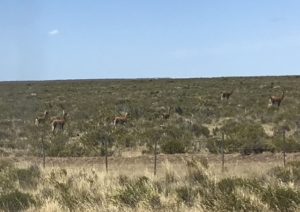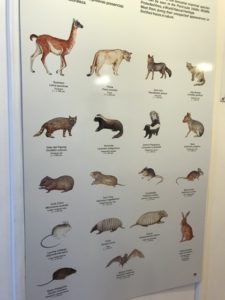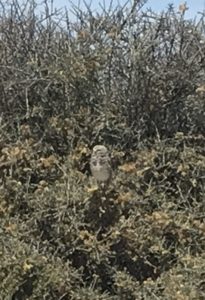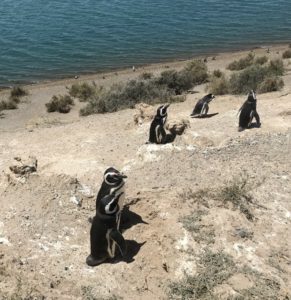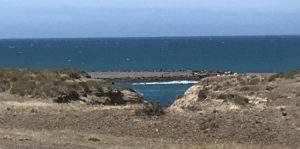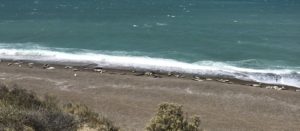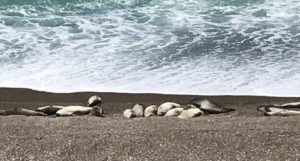This deep water port was founded in 1865 by Welsh immigrants. Extending out into the Atlantic from Puerto Madryn is the Península Valdés, a UNESCO World Heritage wildlife sanctuary where southern right whales mate in its sheltered waters, and sea lions, penguins and elephants seals all have breeding colonies.
The land is flat and dry and we had a two hour bus ride to reach the peninsula, but once we did, we saw lots of guanacos (Related to camels) in groups of 8-15. There are 3,000 in the park and like all the animal, they are protected. Guanacos and vicuña are the wild versions of the domesticated llama and alpaca.
We stopped at a museum where they had a young whale skeleton and charts os birds and animals. 
 One animal that is found nowhere else is the Patagonian Mara, which looks like a jack rabbit but is related to rodents. Peninsula Valdez is also the only place in the world where orca whales swim up on the beach to take sea lion cubs. Apparently, the whales are teaching each other this hunting technique.
One animal that is found nowhere else is the Patagonian Mara, which looks like a jack rabbit but is related to rodents. Peninsula Valdez is also the only place in the world where orca whales swim up on the beach to take sea lion cubs. Apparently, the whales are teaching each other this hunting technique.
Our first stop was at Puerto Piramides, so called because of the pyramid shaped hills, where sea lions come to mate in spring. It is a spectacular location with a shelf where the sea lions are safe from predators. 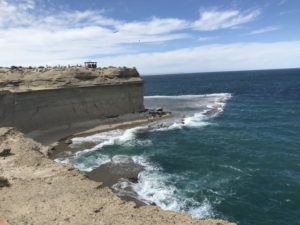

On our way across the peninsula, we were lucky enough to see two burrowing owl chicks come out of their burrow while the parent stood guard. 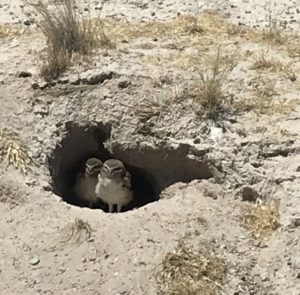
Next, we stopped at a penguin rookery at Caleta Valdez, where there are fewer penguins than on Magdalena Island, but we were very close to them, only separated by a fence.
This area has a very long sandbar that shelters both sea lions and elephant seals. The two populations can occupy the same space because they breed at slightly different times.
The elephant seas were molting when we were there, so they move as little as possible for the almost one month it takes them to molt or shed their fur and skin, revealing a new coat beneath.




